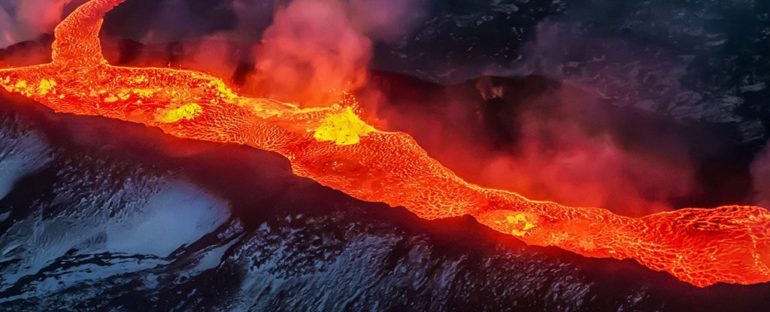A subterranean ‘conveyor belt’ of magma, pushing up to Earth’s surface for millions of years, was responsible for the longest stretch of erupting supervolcanoes ever seen on the planet, according to new research.
Shifts in the seabed caused channels to form, through which the magma could flow freely, researchers say. This resulted in an extensive period of eruptions lasting from around 122 million years ago to 90 million years ago; exceptional, considering that typically these types of flows lasted just 1-5 million years.
This all took place on the Kerguelen Plateau, which now sits under the Indian Ocean. It’s what’s known as a large igneous province or LIP, a widespread accumulation of magma and lava. Scientists can use these LIPs to trace volcanic activity back through time.
“Extremely large accumulations of volcanic rocks – known as large volcanic provinces – are very interesting to scientists due to their links with mass extinctions, rapid climatic disturbances, and ore deposit formation,” says geologist Qiang Jiang, from Curtin University in Australia.
Jiang and his colleagues used samples of black basaltic rocks taken from the sea floor, together with an argon isotope dating method to determine the spread and rise of the LIP as it sat on what’s known as a mantle plume, created by rising magma.
Across the 30 or so years of intense activity, the Kerguelen Plateau rose by about 20 centimetres (7.87 inches) a year, the researchers say. Across the gigantic size of the LIP – about three times the size of Japan – the outpouring equates to lava filling 184,000 Olympic-sized swimming pools per year.
The Kerguelen Plateau saw such a long and steady run of supervolcano activity because of its unique configuration, the study suggests: a mantle plume combining with slow spreading mid-ocean ridges channelling the magma upwards.
“The volcanism lasted for so long because magmas caused by the mantle plume were continuously flowing out through the mid-oceanic ridges, which successively acted as a channel, or a ‘magma conveyor belt’ for more than 30 million years,” says geologist Hugo Olierook, from Curtin University.
“Other volcanoes would stop erupting because, when temperatures cooled, the channels became clogged by ‘frozen’ magmas. For the Kerguelen Plateau, the mantle plume acts as a Bunsen burner that kept allowing the mantle to melt, resulting in an extraordinarily long period of eruption activity.”
That’s a lot of volcanic eruption activity over many millions of years, but the rate dropped significantly about 90 million years ago, and scientists still aren’t sure why. Associated volcanic activity continues to this day, on a much smaller scale.
It’s a fascinating look at the past history of our planet, and of course it informs our study of volcanic activity in the present day too – the more we know about how these kinds of systems can form and stay active, the better we can understand the interactions taking place under the Earth’s surface right now.
“Finding this long, continuous eruption activity is important because it helps us to understand what factors can control the start and end of volcanic activity,” says geochronologist Fred Jourdan, from Curtin University.
“This has implications for how we understand magmatism on Earth, and on other planets as well.”
The research has been published in Geology.
